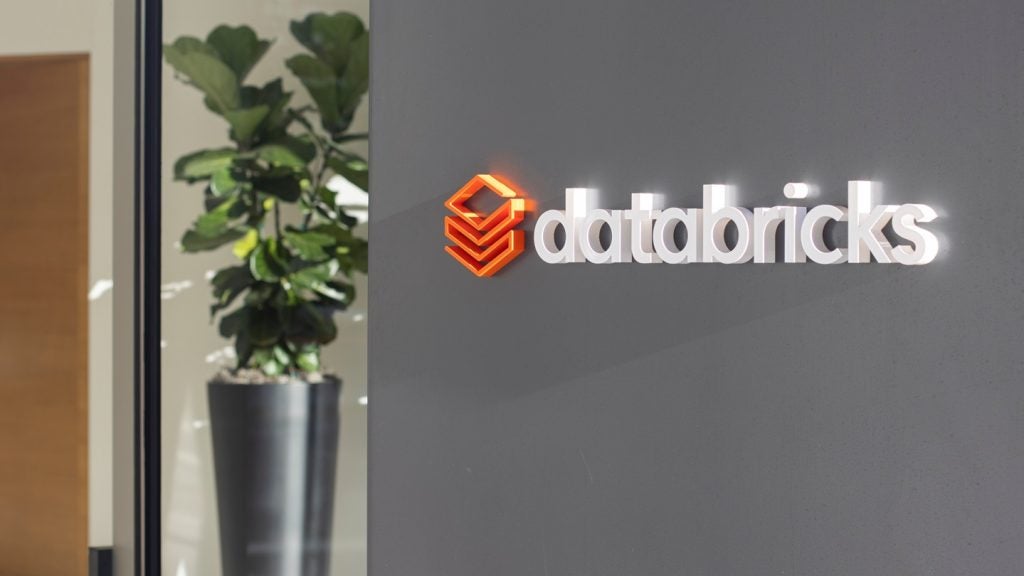
Top banks in Canada are competing for customers by using AI for personalisation and enhanced customer experiences. They are deploying machine learning and natural language processing in their digital banking apps to provide chatbots and insights into customer spending, Robin Arnfield reports
With Covid driving banks’ customers to remote channels, branches are no longer the primary shopfront for selling products. So AI provides the means to turn remote channels into sales and advice channels, leveraging customer data and analytics to more accurately assess customers’ financial needs and provide them with relevant offers.
As well as using AI for personalised experiences and deeper customer relationships, Canadian banks are deploying AI to improve their back-office processes. “Banks are leveraging AI to strengthen cybersecurity, prevent financial crime and enhance their risk management,” said Marina Mandal, vice president, banking transformation and strategy at the Canadian Bankers Association.
“We first saw AI used internally by Canadian banks for fraud detection and management,” said Natalie Cartwright, chief operating officer at Vancouver-based conversational AI developer Finn AI, which supplies chatbot technology to banks. “Now we’re seeing AI being utilised in the customer experience, which is where banks compete today. Personalisation is the trend, and in banking that is an incredibly powerful component. We want to help provide a personal banker to everyone at scale, not just to the top 5% of bank customers where there is a business case for it today.”
Cartwright sees conversational AI as one of the first ways to improve the customer experience. “Using AI in a chatbot to predict what people are saying and asking about is relatively low risk and has fewer ethical implications compared to using AI to make decisions on who should get a mortgage,” she said. “This is why most big Canadian banks have launched conversational AI tools.”
Canadian banks have benefited from Canada’s AI expertise, based on research at universities in Toronto, Montreal and Edmonton, and from federal government encouragement of AI development and talent through initiatives such as the Pan‑Canadian Artificial Intelligence Strategy.

US Tariffs are shifting - will you react or anticipate?
Don’t let policy changes catch you off guard. Stay proactive with real-time data and expert analysis.
By GlobalData“Banks have developed AI solutions both in‑house and through partnerships,” said Mandal. “They also play a strong role in supporting the broader development and growth of Canada’s AI ecosystem through alliances with educational institutions and partnerships with research organisations.”
Ethics
The ethical use of AI and customer data is a major issue in Canada. Though credit-scoring for consumer lending is a potential application for AI, there are ethical issues to be addressed, such as eliminating bias and providing transparency to customers about decisions.
“As a technology, AI is agnostic, and it’s our responsibility as bankers and business owners to use data responsibly,” said Finn AI’s Cartwright. “We want to ensure there are good rules around ownership of data and use of data.”
The Canadian government has played a key role in AI ethics, introducing an algorithmic impact decision tool (https://www.canada.ca/en/government/system/digital-government/digital-government-innovations/responsible-use-ai/algorithmic-impact-assessment.html) to help organisations better understand and manage the risks associated with automated decision systems.
In November 2020, the government tabled Bill C-11, which included the Consumer Privacy Protection Act and the Personal Information and Data Protection Tribunal Act.
Although the Bill was terminated when the government called a federal election for 20 September 2021, it had significant implications from an AI perspective. It introduced the concept of algorithmic transparency, which would require organisations to explain why their AI algorithm made a particular prediction, recommendation or decision based on an individual’s personal data. This transparency would help customers understand how financial services providers use their information.
RBC
RBC’s commitment to AI goes back to 2016 when it launched the Borealis AI (https://www.borealisai.com/en/) machine learning research centre. With labs in Toronto, Waterloo, Montreal and Vancouver, Borealis AI supports open academic collaborations and partners with AI research centres.
In partnership with enterprise open-source software developer Red Hat and AI chip manufacturer NVIDIA, Borealis AI has developed an AI Private Cloud platform to support its machine learning research. The platform gives Borealis AI’s researchers and engineers access to high-performance computing power to keep pace with rapid technology changes.
According to RBC, AI Private Cloud can run thousands of simulations and analyse millions of data points in a fraction of the time that the bank could do before. “Borealis AI is building solutions using machine learning and AI that will transform the way individuals manage their finances and their futures,” said Jikin Shah, senior vice president, RBC Tech Infrastructure. “The key RBC consumer applications that use AI Private Cloud are: Bill Payee Recommender; Weekly Payments/NOMI Forecast; and Intent Prediction.”
RBC’s NOMI (pronounced “know-me”) suite of tools use AI to assess a client’s financial situation, provide insights, identify money available for savings, and recommend budgets. All NOMI tools are integrated with RBC’s mobile banking app.
In 2017, RBC launched NOMI Find & Save and NOMI Insights, using AI technology from Israel’s Personetics.
Find & Save is an automated money management program that monitors transaction patterns, finds pockets of money in clients’ cash flow, and automatically moves that money into savings accounts. Insights provides clients with timely advice and alerts, helping them keep track of spending and plan for upcoming expenses.
In 2019 RBC launched NOMI Budgets, which uses AI to analyse customers’ spending history, monitor their finances, recommend a personalised monthly budget in five areas, and send updates to keep them on track.
The Ask NOMI chatbot, launched in 2020, is an interactive guide to the RBC mobile app which uses AI to answer questions, help clients navigate the app, and simplify tasks such as transaction search.
“We’ve seen increasing adoption over the past four years since we launched NOMI Find & Save and NOMI Insights,” said Benoit Germain, RBC’s senior director, online banking and digital money management. “As clients begin using NOMI, they spend more time in the RBC mobile app – a NOMI client spends approximately twice the amount of time in the app compared to a client who hasn’t set up NOMI.”
- 1.47 million unique users of NOMI tools in June 2021.
- Between 1 July 2020 and 30 June 2021:
- NOMI Insights usage grew by 28%;
- NOMI Budgets usage grew by 53%;
- NOMI Find & Save usage grew by 29%.
- Since 2017, NOMI Find & Save has helped clients find and save over C$1.5bn in total.
- Since 2017, clients have read about 1.7 billion insights through NOMI Insights.
- Since 2019, over 1.1 million clients have set a budget with NOMI Budgets.
- Since 2020, Ask NOMI has answered 3.5 million questions for clients.
![]()
Scotiabank
The use of AI and data is becoming increasingly ubiquitous at Scotiabank, said Phil Thomas, Scotiabank’s EVP customer insights, data and analytics.
In November 2020, Scotiabank launched a Global AI Platform which provides customers with personalised financial advice by anticipating and understanding their needs. The platform is designed to be used in all business lines across Scotiabank.
During the pandemic, Scotiabank leveraged its data and analytics technology to identify and support its most vulnerable Canadian customers who were struggling financially. “We created outreach programs using Scotiabank’s internal data and analytics expertise so our front-line bankers could engage directly with customers and provide them with solutions,” said Thomas.
Scotiabank engaged with 200,000 highly vulnerable customers and also with 2 million vulnerable customers. Thomas said that the engagement helped raise Scotiabank’s net promotor score.
This type of AI-based personal engagement to help customers struggling with debt could become a legal requirement in Canada. The Liberal government has promised that, if re-elected, it would require FIs to offer flexible repayment options to customers who fall on hard times.
In February 2021, Scotiabank launched C.MEE which uses the bank’s Global AI platform to provide “hyper-personalisation.” C.MEE analyses data across customer touchpoints – branch, mobile, online, contact centre and email – to determine what advice is most relevant for a customer. The system then provides the advice through the customer’s preferred channel.
C.MEE has been rolled out in Scotiabank’s Canadian operation, and has led to increased engagement with its customers, Thomas said. “Leveraging our Global AI Platform, we plan to roll C.MEE to our Latin American banks,” he said.
Scotiabank has benefited from Toronto being a hotbed for AI research and talent, and works closely with university-based AI researchers, according to Thomas. It also partners with universities on recruitment of AI experts and has been recruiting from other industries to build its AI team.
“Looking forward, we’ll continue to unlock more of the power of natural language and deep learning by investing in our talent and our partnerships with leading academic institutions,” Thomas said. “Scotiabank’s goal is to execute and put relevant AI solutions into the hand of employees so they can help.”
Scotiabank’s AI team works closely with its digital teams which develop digital products and services for the bank, Thomas noted. “We’re moving more and more towards being a data-driven organisation, so our data and analytics work determines how we build our digital products and vice versa.”
Like other Canadian banks, Scotiabank takes data ethics very seriously. “Scotiabank has been very careful to build proper governance processes for its machine learning systems,” Thomas said. “These processes are intended to make sure our machines learn the way we want them to learn and produce appropriate outcomes.”

Phil Thomas, Scotiabank
ATB Financial
ATB Financial, which is owned by the Alberta provincial government, uses AI to improve the customer experience and for greater efficiency in its back office. It uses natural language processing to enable its chatbot to take transactional instructions and answer questions from customers.
ATB implemented the chatbot because, during the pandemic it wanted to expand its customer service capability to 24×7 and improve wait time for clients with simple requests.
Launched in 2020, the chatbot uses conversational AI technology from Finn AI. It is integrated with ATB’s call centre, which means that clients using it can talk to a human being if they need to, without needing to re-explain the issue.
Using natural language processing, the chatbot can handle 500 different enquiry types, which represent over 65% of ATB’s top call centre enquiries, Dan Semmens, ATB Financial’s head of data and artificial intelligence, said.
The chatbot can handle general enquiries such as “when does the nearest branch open?”, “I want to apply for a credit limit increase on my personal loan,” or “I want to reset my online banking password.” “It can also handle requests to carry out transactions such as paying a bill or transferring money to someone,” said Semmens.
Clients can use the chatbot to apply for products that are already available for digital origination on ATB’s website, for example a bank account or a general loan. “We’ve seen the level of client satisfaction at using the chatbot rise from 70% a year ago to over 90% now,” Semmens said.
ATB has used AI to automate over 200 processes, eliminating manual processing of client service requests that come into its back-office such as changing an address or moving money from one account to another. It also uses AI to read unstructured content in its business clients’ internal accounting statements which clients are required to provide each month as a condition of their loan.
Machine learning is used by ATB to provide clients with personalised advice. “We’ve interacted with over 240,000 clients last year where we’ve offered them AI-assisted advice about products and services to improve their banking experience,” Semmens said.
Currently, ATB doesn’t use AI for risk appraisals and credit-scoring when clients apply for personal loans, preferring to use its existing decision-making models for adjudicating credit.
“One thing that is very important to our clients is explainability – they want to know how we make decisions when assessing their credit applications,” said Semmens. “Ultimately, we’ll get to a place where we leverage AI for credit adjudication, but we want to be able to explain those decisions in an easy way to clients and ensure they are free from bias. We are implementing an internal AI ethics framework showing how we believe we can best leverage data for our clients’ benefit.”
BMO
In November 2020, BMO introduced BMO CashTrack Insight, an AI- and machine learning-based tool that helps customers manage upcoming expenses. The tool predicts potential cash shortfalls up to seven days ahead across chequing and savings accounts. CashTrack Insight is integrated into the BMO Insights tool and available via the BMO banking app.
BMO Insights delivers 20 different personalised, automated insights to help customers manage their finances and spending habits. These include suggesting a fund transfer to a savings account when there is sufficient money in a chequing account to cover expenses.
According to BMO, since its launch in 2019, customers have been receiving around 7 million insights per month via BMO Insights and are engaging with the data generated for them, in some months, nearly 50% of the time.
“Enabling customer financial wellness has become the mantra at many banks,” Celent senior analyst Alenka Grealish wrote in the Celent report “BMO: Game Changing Cashflow Prediction Tool”. “BMO stands out for going far beyond the standard tools by applying advanced AI and design thinking to deliver private bank-like guidance at scale. It has differentiated itself by building a unique tool with high accuracy that offers actionable alerts.”
According to Grealish, BMO’s cashflow prediction tool’s accuracy is exceptionally high at 97% (correct predictions over all predictions) because its model factors in the customer’s holdings and spending across multiple accounts. This contrasts with the models used by some banks that have launched a similar offering based on a single account.
Sensibill
Toronto-based Sensibill uses AI to provide detailed information on card spending for customers, while giving banks the opportunity to make relevant product offers.
“Banks face a challenge in understanding their clients better, because they can have a limited view of them,” said Danny Piangerelli, Sensibill’s CTO. “Most people don’t do all their spending with their core bank – they have credit cards from various issuers or use Google Pay or Apple Pay – so there’s a tremendous amount of data about them that the bank doesn’t have access to.”
Sensibill’s technology enables consumers to upload their receipts into their bank’s mobile app for electronic storage. It then extracts the line items in the receipts by converting the SKUs (stock-keeping unit) codes into product names, letting them know exactly what items they have bought. The analysis, done with customer consent, is based on Sensibill’s database of merchant SKUs.
In Canada, Sensibill provides its receipt management capability for Ottawa-based credit union Alterna Savings’ mobile banking app and TD’s Ugo personal wallet. Ugo is a standalone app for loyalty, membership and digital gift cards and receipts which can be used by the customers of any Canadian FI.
“Our premise is that, if their bank helps customers understand their expenses better, rather than just provide a list of transactions in a credit card statement, they can develop a proper relationship with their bank,” said Piangerelli. “The bank can offer them products that are useful at their particular life stage.”
For example, if the bank sees that a customer is buying baby products, it can suggest they start saving for their child’s education. If the bank sees that a customer is a frequent traveller, but uses a credit card that doesn’t offer rewards, it can offer them its credit card which is co-branded with an airline.
“Our bank clients have told us that, when their customers interact with Sensibill, the bank sees an increase in adoption of its products by those customers,” said Piangerelli. “They are three times more likely to transact with the bank and purchase almost two times more products from it (than customers not using Sensibill). That is because they want to have their bank as their trusted finance partner that helps them understand their spending.”
What is artificial intelligence?
AI refers to advanced computer systems which can sense, comprehend, act and learn by analysing vast quantities of data and identifying patterns that can enhance decision‑making and organisational outcomes.
AI technologies and capabilities include:
- Machine Learning – learning from large sets of data to identify patterns and make decisions;
- Natural Language Processing – enabling computers to understand and process human languages;
- Robotics Process Automation (RPA) – using robots or software to perform tasks
- Speech /Object Recognition – converting human language or objects into a machine‑readable format;
- Intelligent Automation – the convergence of RPA and cognitive technologies;
- Deep Learning – A subset of machine learning that mimics how human brains process data using neural networks.
List of Canadian banks’ AI initiatives
BMO
November 2020
BMO introduced BMO CashTrack Insight, which identifies potential cash shortfalls and helps customers manage upcoming expenses.
December 2019
BMO introduced BMO Insights, which leverages AI to deliver personalised, automated and actionable insights to help customers manage their finances.
CIBC
February 2021
CIBC launched CIBC Insights, offering its mobile banking customers personalised and actionable data-driven recommendations based on their transactions. Using machine learning, CIBC Insights notifies clients of savings opportunities and unusual transactions, while providing guidance on everyday spending decisions.
December 2020
CIBC introduced a conversational AI‑based Virtual Assistant powered by IBM Watson Assistant, which can perform transactions and answer questions about everyday banking.
RBC
July 2020
RBC and its AI research institute Borealis AI partnered with Red Hat and NVIDIA to develop an AI computing platform designed to transform customers’ banking experience and keep pace with rapid technology changes and evolving customer expectations.
April 2019
RBC launched its AI-based budgeting tool NOMI Budgets in the RBC mobile app.
August 2017
RBC launched two tools powered by predictive analytics: NOMI Insights, which helps customers track their spending; and NOMI Find & Save, which automatically moves spare money into savings accounts.
2016
RBC founded the Borealis AI (https://www.borealisai.com/en/) machine learning research centre.
Scotiabank
February 2021
Scotiabank announced C.MEE, which leverages big data and AI to enable better customer experiences. Using AI to predict customer needs, C.MEE provides customers with relevant financial advice.
January 2021
Scotiabank’s global risk management unit (https://www.scotiabank.com/ca/en/about/perspectives.articles.digital.2021-01-grm-machine-learning-analytics.html) used machine learning to develop a cashflow prediction tool for business clients. Sofia (Strategic Operating Framework for Insights and Analytics) uses historical commercial banking data, such as deposits, and trends from the past year combined with machine learning to forecast what clients could expect in the next four weeks.
November 2020
Scotiabank announced a Global AI Platform that provides customers with intelligent and personalised financial advice by anticipating and understanding their needs. The platform is designed to be used in all Scotiabank’s business lines.
Spring 2020
Scotiabank developed a vulnerability model to understand customers’ financial vulnerability during COVID-19. Its data and analytics teams then developed an engine to detect 200,000 highly vulnerable customers and proactively reached out to them with help.
Toronto Dominion
December 2020
As part of its new mobile app, TD began delivering personalised insights to customers that are tailored to their banking needs. TD mobile app users receive digital nudges powered by AI and offering proactive insights that are personalised and contextual to the customer.
January 2019
Using Kasisto’s Conversational AI platform, TD launched TD Clari, a chatbot integrated into its mobile app that gives customers real-time spending insights and help with financial services and everyday transactions. Clari is powered by TD MySpend.
January 2018
TD acquired AI startup Layer 6, which offers an AI platform for real-time prediction and personalisation using machine learning. TD is deploying Layer 6’s technology in internal business processes and customer-facing products. Examples include product recommendations, next best action, personalisation, and prediction of attrition.
This article forms part of GlobalData’s AI Week coverage.
- Data shows investment in AI may be peaking-but H2 2020 ai bucks the trend
- How AI is impacting the auto industry
- Financial sectors look to AI in site selection







